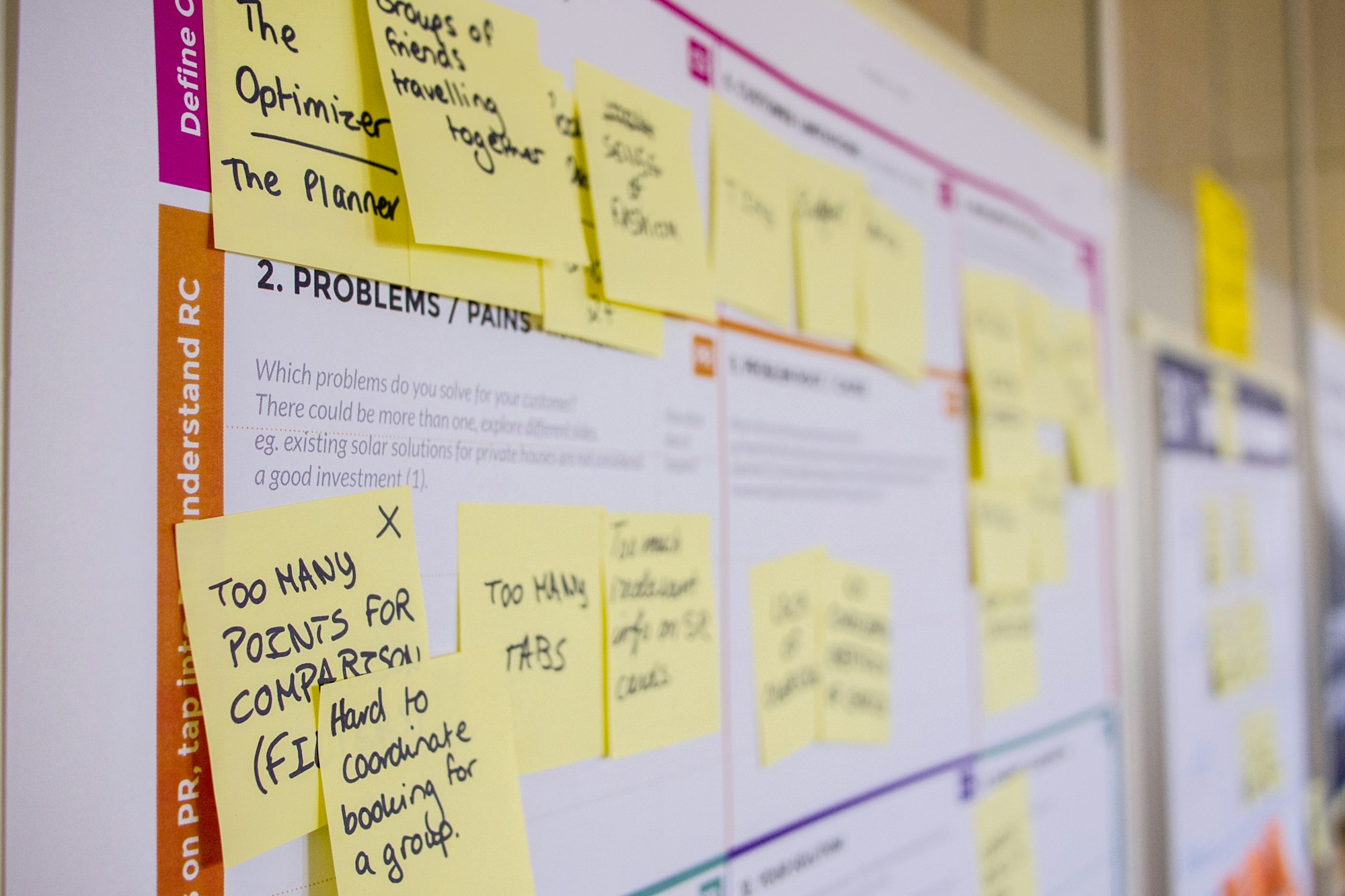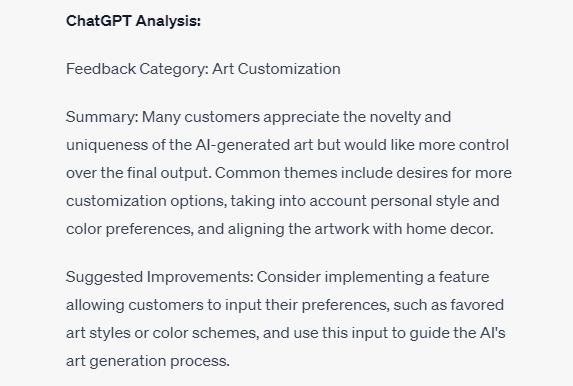Validating a startup idea is an indispensable step in the journey of entrepreneurship. It's a strategic process to affirm that your business idea has a genuine potential to prosper in the market. The concept you are holding may seem groundbreaking, but how will it fare in the real world? Will your target audience embrace it as much as you do?
In the recent years, artificial intelligence (AI) has emerged as an innovative facilitator in this journey, revolutionizing the way we validate ideas. Among the many AI tools available, ChatGPT, developed by OpenAI, stands as a game-changer in this domain.
ChatGPT is a large-scale language model that can understand and generate human-like text. It provides a unique combination of creativity and contextual accuracy, making it an ideal partner in the idea validation process.
In this article, we will guide you through the strategic process of idea validation, demonstrating how ChatGPT can play a pivotal role in each stage. Our focus is on entrepreneurs intending to launch an online platform selling AI-generated art. By the end of this guide, you'll be equipped with a practical framework for using ChatGPT to validate your business idea, bringing you one step closer to successfully launching your AI art platform.
Understanding Idea Validation
Idea validation is a crucial process that determines the feasibility of your business concept. It involves a set of activities aimed at verifying if your business idea has a real potential to thrive in the marketplace. Let's delve into what idea validation encompasses and why it's essential, especially for a niche such as an online store selling AI-generated art.

The importance of Idea Validation
Idea validation is not just a buzzword in the startup ecosystem; it’s an essential step that saves you time, money, and resources by ensuring your business concept aligns with market realities.
An un-validated idea is like a ship sailing without a compass—it may look good on the surface, but there's a high risk of getting lost in the vast entrepreneurial sea.
When you're planning to establish an online platform that sells AI-generated art, the stakes are even higher. The world of AI art is relatively new and uncharted, adding an extra layer of uncertainty. Idea validation helps you navigate through these uncertainties and reduces the risk of failure.
Key steps in Idea Validation
Idea validation is not a one-size-fits-all process. It varies depending on the nature of your startup, target audience, and the industry in which you operate. Here, we'll provide a general outline of the steps involved in the process:
- Identify your unique value proposition: What sets your AI art store apart from others?
- Define your target audience: Who are you creating this art for?
- Market research: Is there a demand for AI-generated art? What does the competition look like?
- Customer validation: Do potential customers show interest in your idea? What feedback do they provide?
- Building a Minimum Viable Product (MVP): Can you create a simple version of your product that allows you to test your idea further?
- Measure and learn: What do the results of your MVP tell you? How can you learn from this feedback and refine your idea?
These steps provide a general guideline for your idea validation journey. In the upcoming sections, we'll explore how you can leverage ChatGPT to facilitate each of these steps effectively.
Leveraging ChatGPT for Idea Validation - A Step-by-Step Guide
Artificial Intelligence, specifically ChatGPT, can be a powerful ally in your idea validation process. Its ability to understand context, simulate conversations, and generate human-like text, can provide unique insights to validate your AI art store idea.
Step 1: Identifying Your Unique Value Proposition
Your value proposition is the core reason why customers should buy from you and not your competitors. ChatGPT can assist you in brainstorming and refining your unique value proposition. By engaging in a simulated conversation with the model, you can articulate your initial ideas and receive feedback that can help clarify and strengthen your value proposition.
Step 2: Defining Your Target Audience
Identifying and understanding your target audience is a crucial step in idea validation. Use ChatGPT to generate a series of questions or surveys you can use to better understand your target demographic, their preferences, needs, and pain points.
Step 3: Conducting Market Research
ChatGPT can automate some aspects of your market research. You can program it to generate questions for customer interviews, surveys, or questionnaires, which can provide crucial insights about your market.
Step 4: Customer Validation
When it comes to gathering feedback about your idea, ChatGPT can be a useful tool for creating and refining your surveys or interview scripts. You can also use ChatGPT to simulate potential customer interactions, helping you anticipate the questions or concerns your target audience may have.

Step 5: Building a Minimum Viable Product (MVP)
While building an MVP for an online AI art store may require technical skills beyond what ChatGPT can offer, the AI can still assist in the planning process. It can help you define the essential features of your MVP based on your unique value proposition and target audience insights.
Step 6: Measuring and Learning
Finally, as you gather data from your MVP tests, ChatGPT can aid in analyzing qualitative feedback. You can input customer reviews or feedback into the model, and it can help summarize, categorize, and even suggest potential improvements based on this information.
Validating Your Startup Hypothesis with ChatGPT
Your startup hypothesis is a testable proposition that is foundational to your business idea. It's an assumption that forms the basis of your strategy, often articulated as an if-then statement. For instance, "If we create an AI art store, then there will be a significant market demand for our products."
Validating your startup hypothesis is critical, and ChatGPT can play a significant role in this process.
Framing Your Startup Hypothesis
The first step is framing your startup hypothesis in a clear, testable format. ChatGPT can assist you in this process by providing constructive feedback and suggestions to refine your hypothesis. You can have an iterative conversation with the model to ensure your hypothesis is clear, concise, and directly linked to the key assumptions that underpin your business idea.
Testing Your Hypothesis
Once you have a well-articulated hypothesis, the next step is to design tests to validate it. This is where you employ techniques like customer interviews, surveys, or launching an MVP. Here too, ChatGPT can be an indispensable tool, helping you design effective questions for interviews and surveys, or outlining the key features of your MVP.
Analyzing the Results
After running your tests, you'll have a range of data to analyze. ChatGPT can assist in organizing and interpreting qualitative data, providing summaries, and suggesting potential actions based on the results.

In the next section, we will delve deeper into how ChatGPT can assist in idea validation specifically for an AI-generated art store.
Validating Your AI Art Store Idea with ChatGPT
AI is revolutionizing numerous industries, and art is no exception. More and more artists are leveraging AI to create unique and mesmerizing pieces, opening a potential market for an online AI art store. Here's how ChatGPT can assist in validating this particular business idea.

Identifying Potential Customers
Start by having ChatGPT help you define your customer persona. This could be a digital artist looking for AI collaboration, a home decorator seeking unique AI-generated pieces, or a gallery owner exploring AI art to attract a modern audience. Use the model to help draft surveys or interview questions that can provide insights into your potential customer's needs, preferences, and purchasing behavior.
Exploring AI Art Trends
Leverage ChatGPT's ability to synthesize large amounts of information. It can help you draft questions or search queries to uncover current trends, successful AI art platforms, and market gaps that your AI art store can fill.
Designing Your MVP
An online AI art store could have many features, from AI-generated art selection to print-on-demand services. Utilize ChatGPT to brainstorm the most valuable features for your target customers and prioritize these in your MVP.
Conducting Customer Interviews
Customer interviews are a key component of the validation process. You can employ ChatGPT to simulate potential customer conversations, helping you anticipate and prepare for possible questions and objections.
Gathering and Analyzing Feedback
Finally, use ChatGPT to assist you in gathering and analyzing customer feedback. The model can help categorize responses, draw out key themes, and suggest actionable insights for your AI art store idea.
By following this process, you'll be well-equipped to validate your AI art store idea using the powerful capabilities of ChatGPT.
Harnessing the Power of ChatGPT for Startup Idea Validation
AI, specifically conversational models like ChatGPT, are powerful tools for startups. They can assist you in refining and validating your business ideas, from understanding your target customers and exploring market trends to designing MVPs and analyzing feedback.
The process we've outlined for an AI art store is just one example. Whether you're exploring a different online platform, service, or product, the principles of idea validation remain the same. And in every step of the process, ChatGPT can provide significant value.
Startups are inherently risky, but with the right tools and approach, you can de-risk your idea as much as possible. Leverage the power of AI, and let ChatGPT be a partner in your journey of startup idea validation.




